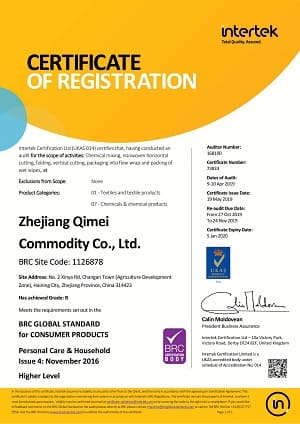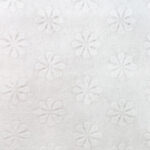Тип ткани из спанлейса: полиэстер, смесь поли-вискозы, бамбуковое волокно, древесная масса (смываемая), хлопковое или соевое волокно (биоразлагаемое)
Плоский или текстурированный (доступен ваш собственный логотип)
Вес: 30-80гсм
1/10/30/80/100/120/160 шт/упак.
The most common size of cosmetic wipes is around 2 inches by 2 inches to 4 inches by 4 inches. This size is convenient for single-use and provides enough surface area to clean and freshen the external genital area. However, some intimate wipes may be smaller or larger than this standard size to cater to specific preferences or needs of consumers.
1. Пластиковый многоразовый пакет: это наиболее распространенный тип упаковки влажных салфеток. Он сделан из пластика и имеет застегивающуюся полоску сверху, чтобы салфетки оставались свежими и влажными.
2. Контейнер с откидной крышкой. Этот тип упаковки состоит из пластикового контейнера с откидной крышкой, которую можно открывать и закрывать для доступа к салфеткам.
3. Мягкая упаковка с пластиковой откидной крышкой: Подобно контейнеру с откидной крышкой, эта упаковка поставляется в мягкой упаковке и имеет пластиковую откидную крышку для легкого доступа.
4. Всплывающий дозатор: этот тип упаковки оснащен выдвижным механизмом выдачи, который вытягивает по одной салфетке за раз.
5. Дорожный пакет. Небольшая упаковка, предназначенная для использования в дороге, часто имеет пластиковую защелку.
6. Одноразовая упаковка: эти влажные салфетки поставляются в небольших герметичных упаковках, которые удобны для путешествий или активного отдыха.
7. Запасной пакет: эта упаковка большего размера предназначена для заправки других контейнеров для влажных салфеток и обычно имеет закрывающееся отверстие.
Water: Water is typically the main ingredient in cosmetic wipes, as it serves as a solvent to dissolve and remove dirt, makeup, and other debris from the skin.
Surfactants: Surfactants are compounds that reduce the surface tension of water and help it to spread more evenly over surfaces. They can be used in cosmetic wipes to help remove dirt and grease from the skin.
Emollients: Emollients are ingredients that help to moisturize and soothe the skin. They may be added to cosmetic wipes to help prevent dryness or irritation.
Preservatives: Preservatives may be added to cosmetic wipes to prevent the growth of bacteria, mold, and other microorganisms that can cause the wipes to spoil or lose their effectiveness.
Fragrances: Fragrances may be added to cosmetic wipes to give them a pleasant scent and improve the overall user experience.
Other ingredients: Depending on the intended use of the product, other ingredients such as vitamins, plant extracts, or sunscreen agents may be added to cosmetic wipes to provide additional benefits to the skin.
Good Manufacturing Practice (GMP): GMP is a set of guidelines that ensure that products are consistently produced and controlled according to quality standards. Compliance with GMP is usually required for products that are intended for human use, including cosmetic wipes.
ISO 9001: This is a quality management system certification that sets standards for the design, production, and delivery of products. It is often required for businesses that supply products to other companies.
ISO 22716: This certification is specific to the cosmetics industry, and sets standards for the production, control, storage, and shipment of cosmetic products.
Oeko-Tex Standard 100: This certification sets standards for the safety and environmental impact of textile products. It may be relevant for cosmetic wipes that are made from textile materials.
FDA Registration: In the United States, manufacturers of cosmetic products are required to register their facilities with the U.S. Food and Drug Administration (FDA).












